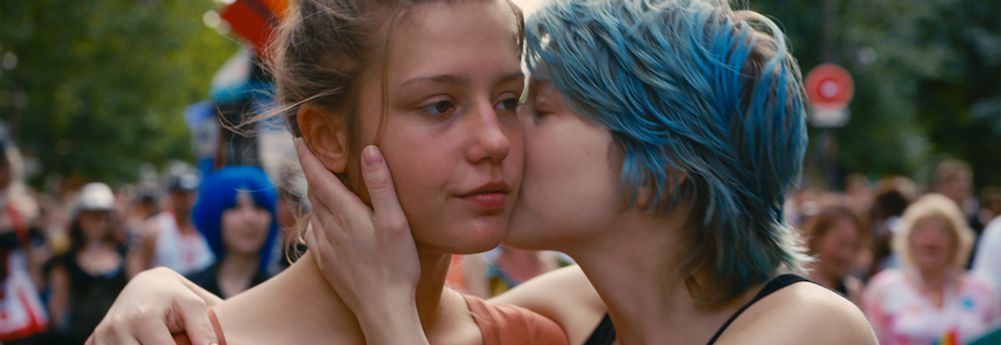
He rarely allows the machinery of plot to distract him from the tangents of talk, and the first part of “Blue” is preoccupied with what seem to be extraneous, trivial arguments and conversations. Kechiche’s earlier films include “The Secret of the Grain,” a similarly messy and capacious consideration of the life of a North African immigrant in France and his extended family, and “Games of Love and Chance” ( “L’Esquive”), which sets a Marivaux comedy in a rough housing project in the Paris suburbs. Exarchopoulos almost never departs from the camera’s scrutiny, and her reality, her ways of seeing and feeling, define the many shades of “Blue.” Mr.

For a while, as with Anna Karenina or Elizabeth Bennet or Clarissa Dalloway, her life is also yours, and afterward you may discover that yours has altered as a result of the encounter. Kechiche is not fussy about marking the passage of time), Adèle acquires a depth and grandeur that make her equal to some of the great heroines of literature. She likes reading and eating (especially her father’s spaghetti) and aspires to a career as a schoolteacher.Īnd yet, over the course of nearly three hours and what seems like about a half-dozen years (Mr. The child of a lower-middle-class family in the northern industrial city of Lille, Adèle is pointedly and contentedly modest in her ambitions.
#WATCH BLUE IS THE WARMEST COLOR LOVE SCENE SKIN#
Her transformation, before our eyes and in close-ups that register every stray tendril of hair and fluctuation of skin tone, is not necessarily into anything more extraordinary.

Played with astonishing sensitivity by the 19-year-old Adèle Exarchopoulos, she gives every appearance, when we first encounter her, of being an ordinary French teenager: running to catch the morning bus to school, daydreaming in class, trading gossip with her friends in the cafeteria. The storm system we are tracking is named Adèle. He studies the radar and scans the horizon in search of emotional weather patterns and then rushes out into the gale, dragging the audience through fierce winds and soul-battering squalls. Although there is plenty of weeping and sighing, the methods of the director, Abdellatif Kechiche, are less melodramatic than meteorological. “Blue Is the Warmest Color” is a feverish, generous, exhausting love story, the chronicle of a young woman’s passage from curiosity to heartbreak by way of a wrenching and blissful attachment to another, slightly older woman.


 0 kommentar(er)
0 kommentar(er)
